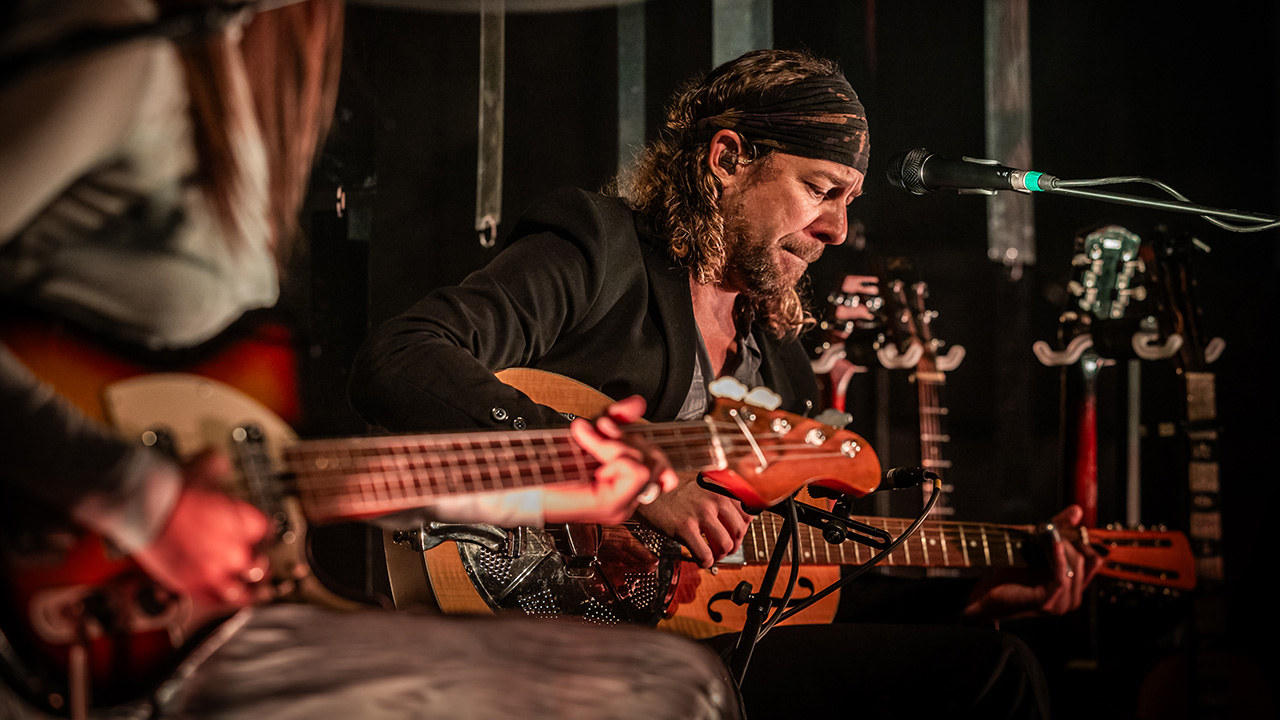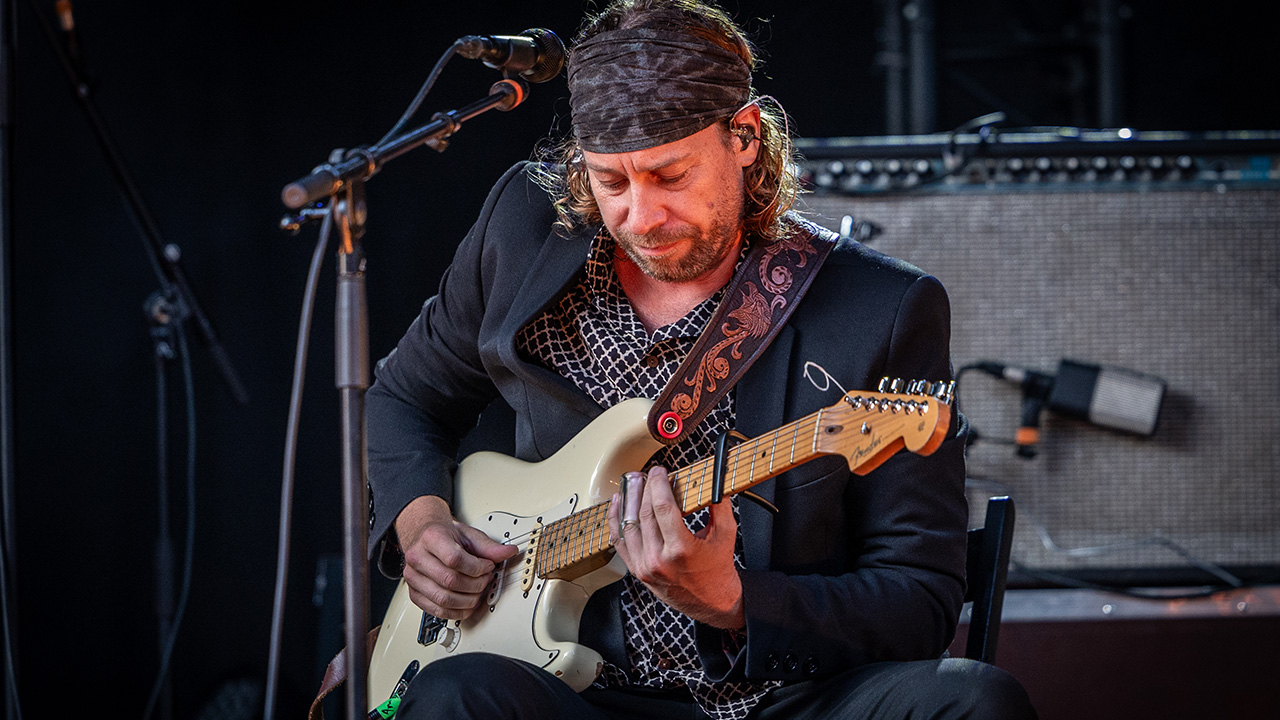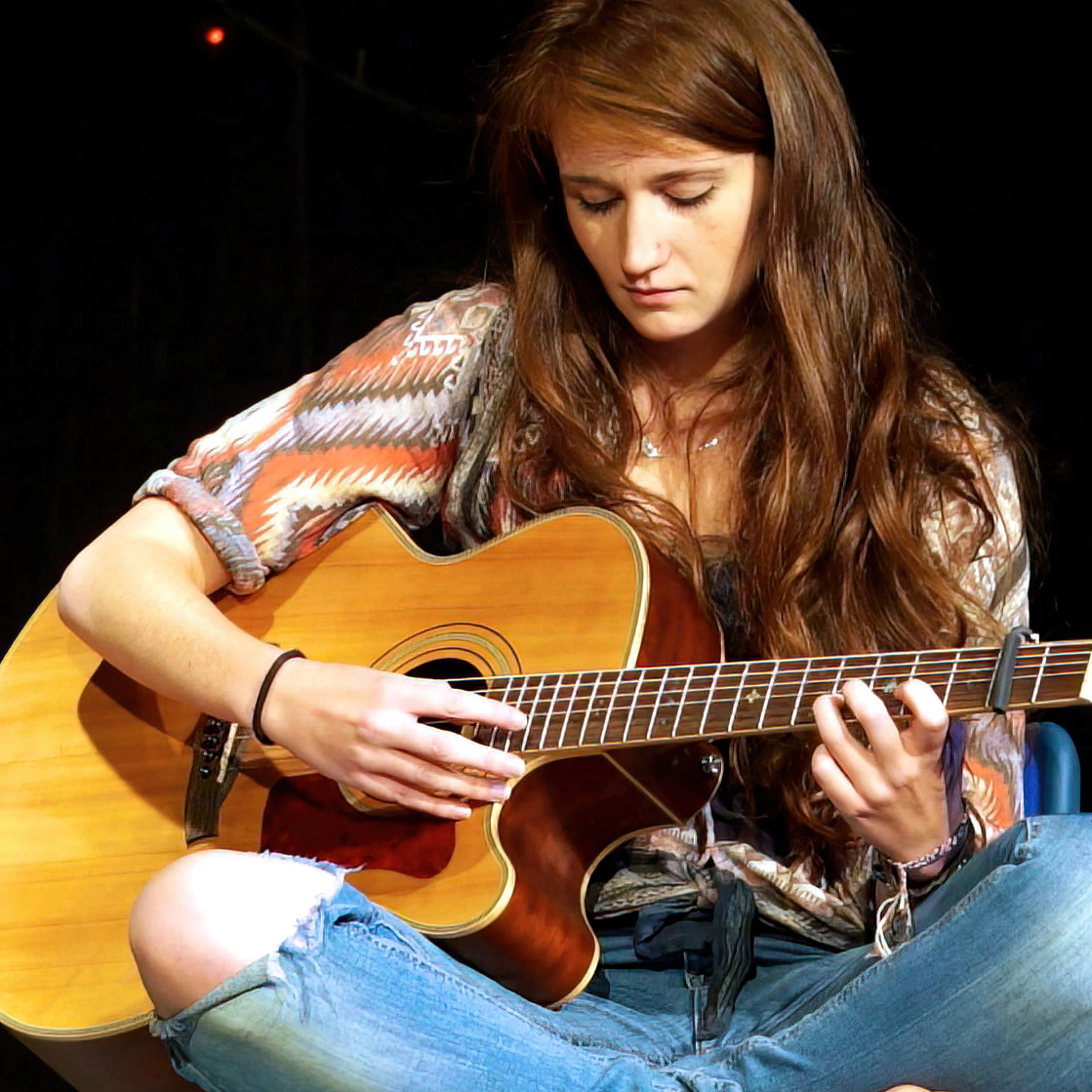“We were trying to put blues riffs on dance beats. We wanted to see what happens if you fuse those two worlds”: Meet Daniel ‘Dafreez’ Johnston, the “blues rave-up” pioneer combining folk fingerstyle and EDM
Teaming classic Strat sounds with tightly sync'd delays in My Baby, Daniel ‘Dafreez’ Johnston is a mercurial guitar talent

With the technical skillset of a folk-blues fingerstylist, but the heart, soul and effects rig of a raver, Daniel ‘Dafreez’ Johnston is a rare and interesting breed of guitarist.
He makes up the Kiwi contingent of Dutch/New Zealand trio My Baby, who specialize in creating roots-driven alternative dance music without the use of synth, sequencers or other electronic equipment. Formed in 2012, the lineup is completed by vocalist and multi-instrumentalist Cato van Dijck and drummer Joost van Dijck.
After arriving in the Netherlands as a child with his “folky mom”, Johnston spent several years alternating between Amsterdam and New Zealand, where he worked as an itinerant fruit picker and busker. If that conjures pastoral images of an archetypal traveling bluesman, try imagining the scene with a soundtrack of dub reggae, drum and bass and trance music.
It was the late ‘90s to early 2000s when rave culture was in full swing. “I was exposed to a lot of that,” he says. “It didn’t really seep into the way I approached my music, but it was always on the periphery.”
Traditional blues and modern dance have more in common than first meets the ear – both make use of mesmeric repetition, and both often rely on dynamic shifts over harmonic movement to create interest, tension and resolution.
“That’s probably what spurred us on to see what happens if you fuse those two worlds,” Johnston agrees. “When we started we were very conscious of trying to put blues riffs on dance beats, whether that was a 140bpm trance beat or 128bpm old school house beat. A lot of blues riffs are played on a shuffle rhythm, so you have to sort of morph them onto a straight beat. You get some interesting results.”
Their 2013 debut LP Loves Voodoo! did just that, establishing the My Baby sound as a delta-dance hybrid with vintage guitar tones and infectious grooves. Back then, Johnston’s use of effects was sparing, but more experimental guitar treatments soon came to the fore.
All the latest guitar news, interviews, lessons, reviews, deals and more, direct to your inbox!
“As we played live we started incorporating more effects, especially delay,” he says. “That’s what’s added more of an electronic dance music sound.”
From tight slapback delays to longer dub-style echoes, and from classic dotted eighths to trippy triplet rhythms, Johnston has become a master of multiplying his guitar sound with a stack of different delay styles to deliver what he calls a “blues rave-up” experience.
If you want to emulate some of what he does, you’ll need a digital delay pedal with a range of modes and tap tempo capabilities. Johnston opts for a Boss DD-200, with a Boss ES-8 to jump between pre-saves on stage.
“I used to use an old Memory Man, which was not tap tempo,” he says. “It was kind of ridiculous when I started getting into time-based arpeggios. The early years featured a lot of leaning over my pedalboard and trying to create stuff in the spur of the moment. It was fun – but it gets to the point where it’s not as stage-worthy as you’d like.”
Entering the world of tap tempo delays was a great relief. “When we play, we improvise a lot and we change the tempo and the structure, which makes it easier to lock into the energy of the crowd,” he explains, adding that they never play “on the grid” so as to avoid losing that freedom.

Delays also play an essential part in creating rave build-ups that have become staples of the My Baby show during signature songs like Seeing Red, Make A Hundred and Uprising. Johnston sometimes uses a DigiTech Whammy for extra pitch-shifting during those passages.
The blues rave-up is fun and you get so much back from the audience
An EHX Soul Preacher is essential for compression and sustain, while a vintage Boss OC-2 octave pedal helps bolster the bottom-end, providing “a synth-like quality, like a synth arpeggio” when used in conjunction with the DD-200. Johnston opts for a Fender Strat to bring out the nuances of his fingerstyle technique, running everything through a ‘64 Fender Tremolux and a vintage black-panel Twin.
“The Strat's nice in combination with those effects because it’s clear and bright,” he explains. “I’m always looking for that clear, bright sound because I play quite percussively and very dynamically with my fingers, so I want to hear those nuances. The Strat just does that best for me.”
Although My Baby have built their reputation on massive electronic-influenced party tunes, they plan to change tack temporarily in the fall when they embark on an acoustic-led theater tour.
“The blues rave-up is fun and you get so much back from the audience,” Johnston says, “but there are a lot of musical modes of expression that you can’t release in that type of setting. It’s something we’ve longed for. It’s very different playing to a seated audience – it allows you to play differently and show something different.”
- My Baby acoustic tour tickets are on sale now.
Since graduating university with a degree in English, Ellie has spent the last decade working in a variety of media, marketing and live events roles. As well as being a regular contributor to GuitarWorld.com, she currently heads up the marketing team of a mid-scale venue in the south-west of England. She started dabbling with guitars around the age of seven and has been borderline obsessed ever since. She has a particular fascination with alternate tunings, is forever hunting for the perfect slide for the smaller-handed guitarist, and derives a sadistic pleasure from bothering her drummer mates with a preference for wonky time signatures.


